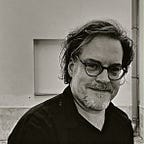Joe Henderson: “Playing the Saxophone Is What I’m Supposed To Be Doing on This Planet”
By Bradley Bambarger <2019>
The tenor saxophone has long been one of the most iconic instruments in jazz, with heroes of the music playing the instrument: Coleman Hawkins, Lester Young, Ben Webster, Dexter Gordon, John Coltrane, Stan Getz, Sonny Rollins, Wayne Shorter. Another one of the all-time tenor greats is Joe Henderson (1937–2001), who was a key inspiration for such later sax stars as Branford Marsalis and Joe Lovano. Marsalis called Henderson “one of the most influential saxophone players of the 20th century.” He started out in the ’60s making classic records for the Blue Note label, both as a leader and as a sideman for Horace Silver, Lee Morgan, Grant Green and Andrew Hill, among others. The saxophonist survived hard times for jazz in later decades by staying true to his muse — and enjoyed success as an elder statesman, winning four Grammy Awards.
Guitarist John Scofield told DownBeat in 1992: “Joe Henderson is the essence of jazz. He’s a great blues player, a great ballads player. He has one of the most beautiful tones… He’s got unbelievable time. He can float, but he can also dig in. He’s got his own vocabulary… He plays songs in his improvisations. He’ll play a blues shout like something by Joe Turner next to some of the fastest, ‘outest,’ most angular, most atonal music you’ve ever heard. Who’s playing better on any instrument, more interestingly, more cutting edge yet completely with ‘roots’ than Joe? He’s my role model.”
Growing up in Ohio, Henderson listened to country, blues and R&B, as well as swing-era jazz and bebop. As a teen, he practiced with just a drummer, saying that harmonic self-reliance “taught me to keep up with my place in the structure of a tune.” After some time on the funky Detroit jazz scene, he moved to New York City. He bonded there with trumpeter Kenny Dorham, who invited him into the Blue Note family. Henderson’s first recording session was for Dorham’s Una Mas LP, and over the saxophonist’s years recording for Blue Note — a golden age for jazz — he was strikingly versatile, contributing to hard-bop albums (Silver’s Song for My Father), soul-jazz hits (Morgan’s “The Sidewinder”) and avant-garde ventures (Hill’s Point of Departure).
About his sideman period, Henderson recalled striving to be “the best interpreter I could possibly be… I’d study and try to find ways of being imaginative without changing the music around. I didn’t want to make Horace Silver’s music different from what he had in mind. I wanted to make it even more of what he had in mind.”
As a leader, Henderson produced five sterling Blue Note albums in just three years, starting in 1963: Page One, Our Thing, In ’n Out, Inner Urge and Mode for Joe. After that, he made a string of albums for the Milestone label, including his first record with electric instruments (Power to the People, with Herbie Hancock and other all-stars), a globally minded collaboration with pianist/harpist Alice Coltrane (The Elements) and a smoking-hot live set with a Japanese rhythm section (Joe Henderson in Japan).
In the jazz doldrums of the late ’70s and ’80s, Henderson kept on keeping on, making live trio albums that showcased aria-like explorations of Thelonious Monk’s “Ask Me Now” and “Round Midnight,” as well as Dorham’s “Blue Bossa” and his own “Inner Urge.” In 1991, Henderson entered his high-profile run with Verve Records, recording a hit series of “songbook” releases that began with Lush Life, a wonderful tribute to composer-arranger Billy Strayhorn (Duke Ellington’s right-hand man) that matched Henderson with such young stars as trumpeter Wynton Marsalis and bassist Christian McBride. Then came albums devoted to the music of Miles Davis, bossa-nova composer Antônio Carlos Jobim and George Gershwin’s folk-opera Porgy & Bess, as well as a big-band record. Henderson ended his career on a high note.
Discussing his long road in jazz, Henderson said: “Playing the saxophone is what I’m supposed to be doing on this planet… It’s the best way I know that I can make the largest number of people happy and get for myself the largest amount of happiness.”
Go-To Joe Henderson Albums: Page One (Blue Note, 1963); Inner Urge (Blue Note, 1964); Four and Straight, No Chaser (Verve, 1968); Power to the People (Milestone, 1969); Joe Henderson in Japan (Milestone, 1971); The Elements (Milestone, 1973); An Evening with Joe Henderson (Red, 1985); Lush Life: The Music of Billy Strayhorn (Verve, 1991).
(Originally published in the May 2019 issue of In Tune magazine.)
